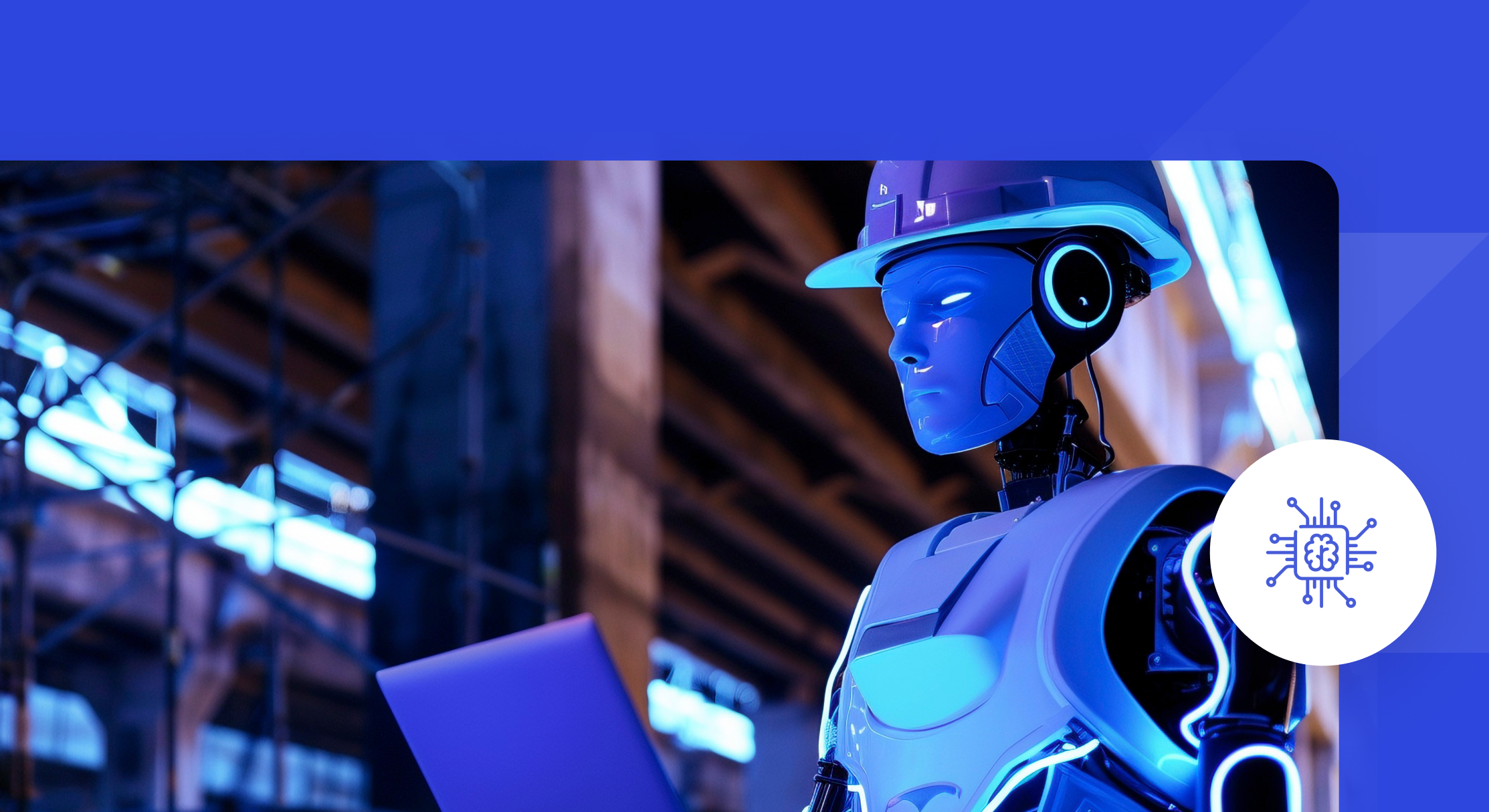

Artificial Intelligence (AI) is transforming safety management by integrating advanced technologies such as machine learning, predictive analytics, and computer vision into safety systems. These AI-driven solutions proactively identify and mitigate potential hazards, enhancing workplace safety and operational efficiency.
For instance, AI can analyze data from various sources to predict unsafe behaviors and conditions, enabling timely interventions. Additionally, AI-powered tools automate safety inspections and compliance tracking, reducing administrative burdens and ensuring adherence to safety protocols. By leveraging AI, organizations can create safer work environments and improve overall safety performance.
Artificial Intelligence (AI) is revolutionizing workplace safety by integrating advanced technologies into safety systems. AI-powered solutions proactively identify and mitigate potential hazards, ensuring worker safety and improving overall safety outcomes.
For instance, AI-enabled wearable devices monitor vital signs such as heart rate and fatigue levels, providing real-time data to prevent accidents. Additionally, AI-driven safety software automates inspections and compliance tracking, streamlining safety protocols and enhancing efficiency. By leveraging AI, organizations can create safer work environments and improve safety standards
Artificial Intelligence (AI) is revolutionizing safety management through the integration of advanced technologies and tools. AI algorithms and AI models analyze vast datasets to identify potential hazards and predict unsafe behaviors, enabling proactive risk management.
AI-driven safety solutions automate routine safety checks, ensuring compliance with safety standards and protocols. Generative AI creates realistic simulations for training purposes, enhancing preparedness for emergency situations. Additionally, dynamic provisioning allows for the real-time allocation of resources, optimizing safety measures as conditions change. By leveraging these AI capabilities, organizations can enhance safety outcomes and foster a culture of proactive safety management
Artificial Intelligence (AI) is transforming risk management by enabling organizations to proactively identify, assess, and mitigate potential risks. AI-driven systems analyze vast datasets to uncover hidden patterns and predict future risks, enhancing decision-making processes. For example, AI algorithms can process market data to forecast financial volatility, allowing businesses to adjust strategies accordingly.
Additionally, AI tools automate routine risk assessments, improving efficiency and ensuring compliance with safety standards. By integrating AI into risk management frameworks, organizations can achieve more accurate risk evaluations and implement timely interventions, thereby safeguarding assets and operations
Artificial Intelligence (AI) is revolutionizing occupational health by enhancing health and safety measures in the workplace. AI technologies, such as machine learning algorithms and predictive analytics, enable real-time monitoring of workplace conditions, facilitating the early detection of potential hazards and unsafe behaviors. This proactive approach aids in injury prevention and the reduction of musculoskeletal injuries.
For instance, AI-powered systems can analyze data from wearable devices to monitor workers' posture and fatigue levels, providing insights to prevent injuries. Additionally, AI-driven safety training programs offer personalized learning experiences, improving safety performance and ensuring compliance with safety protocols. By integrating AI into safety systems, organizations can create safer work environments and enhance overall safety outcomes.
Artificial Intelligence (AI) is significantly enhancing ergonomics and injury prevention in the workplace. AI-driven systems monitor employee movements in real-time, identifying risky postures or repetitive motions that could lead to musculoskeletal disorders (MSDs). By providing immediate feedback, these systems enable workers to adjust their behaviors promptly, reducing the risk of injuries
In addition to monitoring, AI is advancing exoskeleton technology, which assists workers in performing physically demanding tasks. Modern exoskeletons, powered by AI, adapt to various movements such as walking and running without the need for individual calibration. This adaptability enhances human performance and reduces the physical strain associated with manual labor
Artificial Intelligence (AI) is transforming safety management by enhancing risk assessment, automating safety procedures, and providing real-time monitoring. AI-driven systems analyze vast datasets to predict potential hazards, enabling proactive interventions and improving safety outcomes. The future of AI in safety management is promising, with trends indicating increased integration of AI tools, more sophisticated data analytics capabilities, and broader adoption of AI-driven strategies to continuously enhance safety and reduce injuries.
As AI continues to evolve, its role in safety management is expected to expand, offering more sophisticated tools for creating safer work environments. By leveraging AI, organizations can enhance safety performance, ensure compliance with safety standards, and foster a culture of proactive safety management
Integrating Artificial Intelligence (AI) into safety management introduces several ethical challenges and limitations that organizations must address to ensure responsible deployment.
Ethical Challenges
Limitations of AI in Safety
Artificial Intelligence (AI) is revolutionizing safety management across various industries by introducing innovative solutions that enhance risk assessment, compliance monitoring, and incident prevention.
AI technologies, such as predictive analytics and machine learning algorithms, enable organizations to proactively identify potential hazards and unsafe behaviors. By analyzing historical data and real-time inputs, AI systems can forecast risks, allowing for timely interventions that prevent accidents and enhance overall safety performance
The integration of AI into safety applications has led to the development of advanced tools that automate routine safety checks, monitor compliance with safety standards, and provide real-time feedback to workers. These AI-driven safety applications not only streamline safety processes but also foster a culture of proactive safety management within organizations
AI-powered safety systems are designed to continuously monitor workplace environments, detect anomalies, and alert personnel to potential safety issues. These systems utilize sensors, cameras, and data analytics to provide comprehensive oversight, ensuring that safety protocols are consistently followed and that any deviations are promptly addressed.
Artificial Intelligence (AI) is poised to significantly transform safety management practices across various industries. By integrating AI technologies, organizations can enhance risk assessment, automate safety procedures, and provide real-time monitoring, leading to improved safety outcomes
AI's Ongoing Role in Risk Management and Safety
As AI technologies continue to evolve, their role in risk management and safety is anticipated to expand. AI-powered solutions are expected to provide more sophisticated tools for creating safer work environments, enhancing safety performance, ensuring compliance with safety standards, and fostering a culture of proactive safety management.

This website stores data such as cookies to enable site functionality including analytics and personalization. By using this website, you automatically accept that we use cookies.